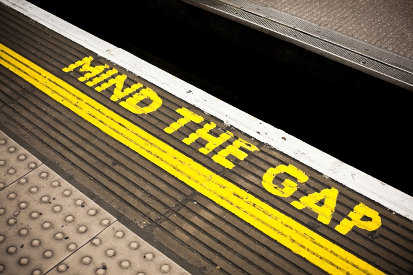
In our previous post about gaps, we looked at market behavior around opening-gaps and would generally happen during that same trading session. But nothing spectacular came out, an opening-gap basically meant nothing for further price action that day. Also, the average size of an opening-gap turned out to be a few factors smaller than average daily volatility, so those margins were easily absorbed regardless of whether there was an opening gap or not.
Now suppose the opening-gap does not get closed during the same trading day. How does affect the market in the next couple of days? Does price gravitate back towards such a gap, as if it wants to pull in price or doesn't it have any significant meaning as we saw in the opening-gaps analysis? Let's dive in.
How often do we see a gap on the daily chart? Surprisingly more often on the up-side than on the down-side. When looking at the same dataset as in our previous post, this came out:
| Event | Number | Percentage |
| Gaps up on the daily chart | 478 | 6,8% |
| Gaps down on the daily chart | 247 | 3,5% |
Given there is a gap, what happens on the first day after that gap? That's the column under '1' in the table below. Gaps up are closed in 22% of the cases the day after it was created, and 21% for gaps down. Then, to the right, we see that it takes 4 days to close 50% of daily gaps. And towards the end, after 10 days, two-third is closed. There seems to be a slight bullish bias in closing, but that's probably due to the overall bullish nature of the stock market.
| 1 | 2 | 3 | 4 | 5 | 6 | 7 | 8 | 9 | 10 | |
| gap up closed | 22% | 36% | 45% | 51% | 55% | 58% | 62% | 62% | 64% | 65% |
| gap down close | 21% | 36% | 48% | 55% | 58% | 64% | 66% | 67% | 70% | 72% |
It is maybe somewhat surprising that the first two days, gaps act as a sort of barrier. Despite the small margin, price stays on the same side. But then, normal volatility sets in again, which will close most gaps in a couple of days.
Most analysts however will call for gap close the first day, but that is certainly not the most likely scenario. To put that in different words, don't trade counter gap expecting it to close the next day. That trade is only favorable after 8 to 10 days. But again, at that point, it has nothing to do with the gap, but more so with average random volatility.